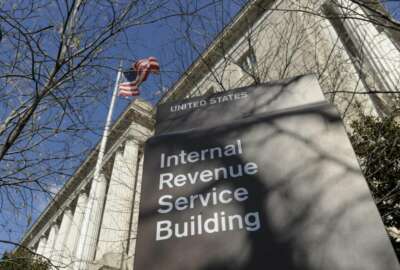When it comes to being a savvy, successful investor, your typical federal bureaucrat may leave other professions — doctors, lawyers and even private sector rocket scientists — in the dust. The vast majority of current and retired feds either have or had a Thrift Savings Plan account. The TSP is the federal version of a 401k plan. But on steroids thanks to its super-low administrative fees and a government match of up to 5%. At last count, there were 75,000-plus workers or retirees with accounts worth between $1 million and $6 million. Almost 90,000 had accounts worth $750,000 to $1 million. Most were invested in the TSP’s stock indexed funds — the C, S and I funds. And most had been investing steadily through good and bad times in the market for several decades.
Oversight of the TSP is 20/20. Its participants include members the House, Senate and occupants of the White House — as well as members or staff of the Supreme Court, FBI agents, IRS auditors, astronauts, SEC attorneys and CIA agents. Many prominent investors and financial experts have said they would L-O-V-E to be able to participate in a low-fee fund with such a generous employer match. And yet when it comes time to retire, some 22% of participants take all of their money out of the TSP within one year of leaving the government and invest in an outside account. How come? Many say they get more flexibility outside of the TSP. Others say they want more investment choices. Or more active management advice from professionals.
So we asked a pro — Arthur Stein. He’s a well-known financial planner in the D.C. area and his clientele includes many active and retired feds. Including some members of the self-made Millionaires Club. He’ll be my guest today at 10 a.m. ET on Your Turn. The show will be streaming live here or on the radio at 1500 AM in the D.C.-Baltimore metro area. It will also be archived so you can listen again, or refer it to a friend or workmate.
To outline what he’s going to be talking about he’s written this:
Is Advice Worth A Price?
By Arthur Stein, CFP
One of the most controversial and difficult decisions for federal retirees is whether to transfer their TSP investments to an IRA. Mike’s May 25 column summarizes some of the issues involved and differences between the TSP (which is a 401k retirement plan) and IRAs (which are not).
TSP versus IRA comparisons usually discuss expenses, withdrawal options and restrictions, investment options and RMD requirements. Often not mentioned is that the TSP does not provide individual investment advice. TSP participants must make and implement their own investment decisions.
One advantage of transferring TSP funds to an IRA is that IRA investments can be directly managed by a professional investment advisor. Choose an advisor that is a “fiduciary.” Advisors meeting the fiduciary standard can only recommend what is in their clients’ best interest. They cannot recommend an investment because it pays them more or provides some sort of bonus.
Doctors, lawyers and CPAs are fiduciaries. Investment managers should meet that same high standard. And yes, my firm is a fiduciary. I wouldn’t do it any other way.
Many federal retirees reject hiring investment managers because investment advisors charge fees to manage investments. Surprisingly, that objection is often made by TSP investors who acknowledge that their own decisions cost them hundreds of thousands of dollars in lost returns.
One current federal employee wrote me that, because of his mistakes, he now estimates that he will have to work until age 78 instead of 63. His mistakes included selling all his stock funds after a market crash (“I sold on the lowest point and locked in my losses”) and resuming stock fund investing in February 2021 at the highest share price. He estimates that these and other investment mistakes cost him approximately $400,000. He then asked me for some free advice on an appropriate TSP allocation and how quickly to move his G Fund balance back into the stock funds.
But he doesn’t want to pay for investment management because he thinks it is too expensive.
Well, expensive can mean many different things. A $5 cup of coffee and $1200 smart phone are expensive. Paying a 1% annual management fee to an advisor to manage your $1 million retirement fund can seem expensive. But $400,000 lost because of your investment mistakes is much more expensive. Why accept that expense to avoid paying a significantly smaller fee to hire a good – fiduciary – investment manager who will help you avoid such mistakes?
Moral of my story: Don’t lose a lot to save a little.
Note: Hiring an investment advisor does not guarantee against loss. Past performance is no guarantee of future performance.
Nearly Useless Factoid
By Alazar Moges
Super Glue was accidentally invented by Dr. Harry Coover in 1942. During World War II, Dr. Coover and his colleagues were working to make a clear plastic for precision gun-sights using chemicals known as cyanoacrylates. During their testing, they had issues with the chemicals becoming sticky and moved on. Years later while working for Kodak, he came across the chemicals again and realized their potential. He received a patent for the adhesive, and after some refining, the product was packaged and began being marketed in 1958.
Source: Lemelson-MIT
Copyright
© 2024 Federal News Network. All rights reserved. This website is not intended for users located within the European Economic Area.
